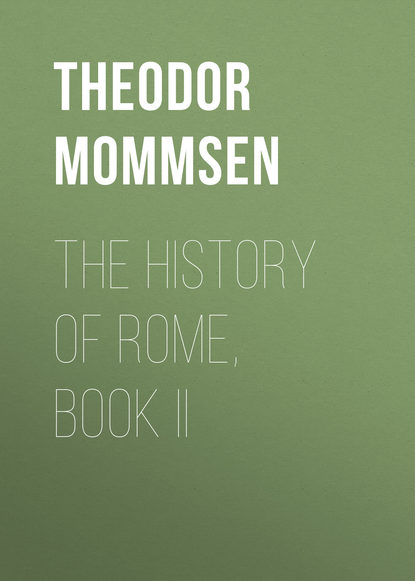По всем вопросам обращайтесь на: info@litportal.ru
(©) 2003-2024.
✖
The History of Rome, Book II
Настройки чтения
Размер шрифта
Высота строк
Поля
163
I. XIII. System of Joint Cultivation
164
I. XIII. Inland Commerce of the Italians
165
I. XIII. Commerce in Latium Passive, in Etruria Active
166
I. XIII. Etrusco-Attic, and Latino-Sicilian Commerce
167
I. XIII. Etrusco-Attic, and Latino-Sicilian Commerce
168
II. IV. Etruria at Peace and on the Decline, II. V. Campanian Hellenism
169
The conjecture that Novius Flautius, the artist who worked at this casket for Dindia Macolnia, in Rome, may have been a Campanian, is refuted by the old Praenestine tomb-stones recently discovered, on which, among other Macolnii and Plautii, there occurs also a Lucius Magulnius, son of Haulms (L. Magolnio Pla. f.).
170
I. XIII. Etrusco-Attic, and Latino-Sicilian Commerce, II. II. Rising Power of the Capitalists
171
II. III. The Burgess Body
172
II. III. The Burgess Body
173
II. III. Laws Imposing Taxes
174
II. III. The Burgess Body
175
II. VII. Construction of New Fortresses and Roads
176
We have already mentioned the censorial stigma attached to Publius Cornelius Rufinus (consul 464, 477) for his silver plate.(II. VIII. Police) The strange statement of Fabius (in Strabo, v. p. 228) that the Romans first became given to luxury (—aisthesthae tou plouton—) after the conquest of the Sabines, is evidently only a historical version of the same matter; for the conquest of the Sabines falls in the first consulate of Rufinus.
177
II. V. Colonizations in the Land of the Volsci
178
II. VI. Last Campaigns in Samnium
179
II. VIII. Inland Intercourse in Italy
180
I. III. Localities of the Oldest Cantons
181
I. II. Iapygians
182
II. V. Campanian Hellenism
183
II. VIII. Transmarine Commerce
184
II. VII. The Full Roman Franchise
185
II. VI. Battle of Sentinum
186
II. III. The Burgess-Body
187
II. VIII. Impulse Given to It
I. XIII. System of Joint Cultivation
164
I. XIII. Inland Commerce of the Italians
165
I. XIII. Commerce in Latium Passive, in Etruria Active
166
I. XIII. Etrusco-Attic, and Latino-Sicilian Commerce
167
I. XIII. Etrusco-Attic, and Latino-Sicilian Commerce
168
II. IV. Etruria at Peace and on the Decline, II. V. Campanian Hellenism
169
The conjecture that Novius Flautius, the artist who worked at this casket for Dindia Macolnia, in Rome, may have been a Campanian, is refuted by the old Praenestine tomb-stones recently discovered, on which, among other Macolnii and Plautii, there occurs also a Lucius Magulnius, son of Haulms (L. Magolnio Pla. f.).
170
I. XIII. Etrusco-Attic, and Latino-Sicilian Commerce, II. II. Rising Power of the Capitalists
171
II. III. The Burgess Body
172
II. III. The Burgess Body
173
II. III. Laws Imposing Taxes
174
II. III. The Burgess Body
175
II. VII. Construction of New Fortresses and Roads
176
We have already mentioned the censorial stigma attached to Publius Cornelius Rufinus (consul 464, 477) for his silver plate.(II. VIII. Police) The strange statement of Fabius (in Strabo, v. p. 228) that the Romans first became given to luxury (—aisthesthae tou plouton—) after the conquest of the Sabines, is evidently only a historical version of the same matter; for the conquest of the Sabines falls in the first consulate of Rufinus.
177
II. V. Colonizations in the Land of the Volsci
178
II. VI. Last Campaigns in Samnium
179
II. VIII. Inland Intercourse in Italy
180
I. III. Localities of the Oldest Cantons
181
I. II. Iapygians
182
II. V. Campanian Hellenism
183
II. VIII. Transmarine Commerce
184
II. VII. The Full Roman Franchise
185
II. VI. Battle of Sentinum
186
II. III. The Burgess-Body
187
II. VIII. Impulse Given to It








